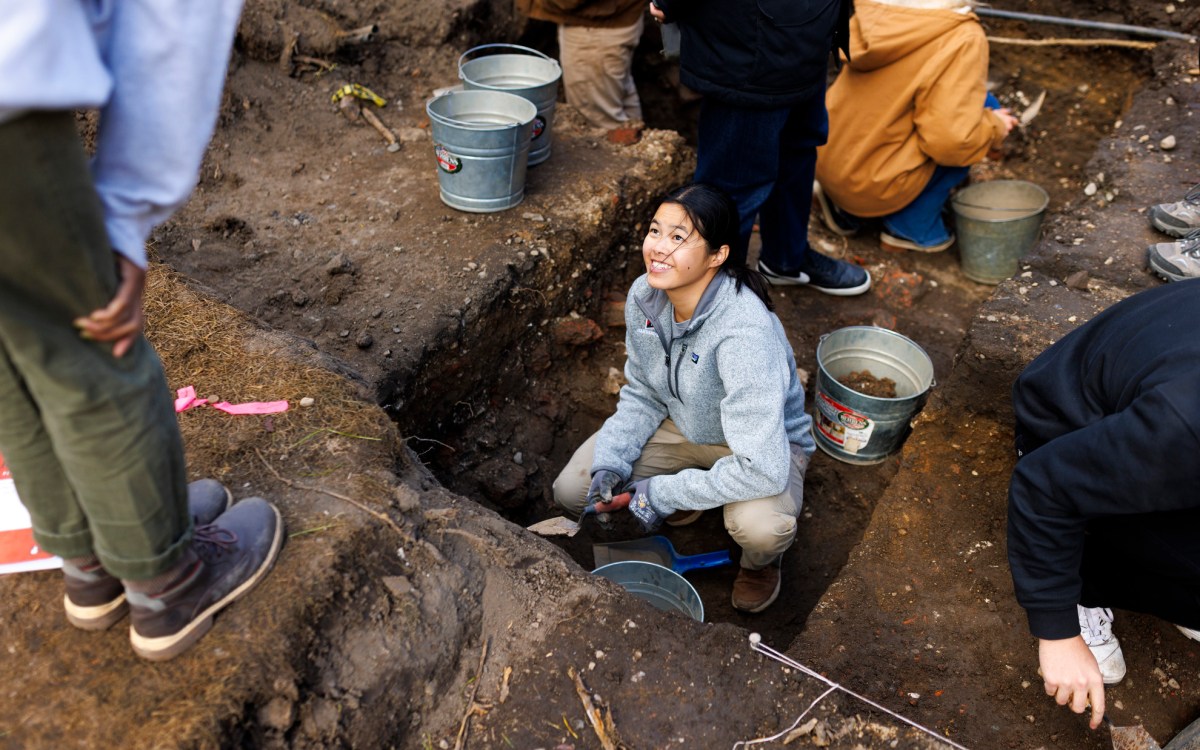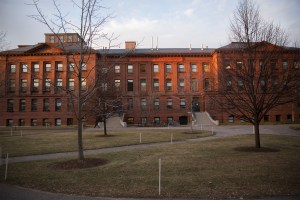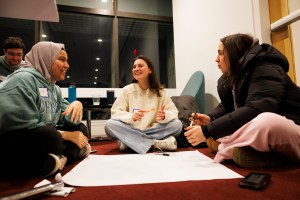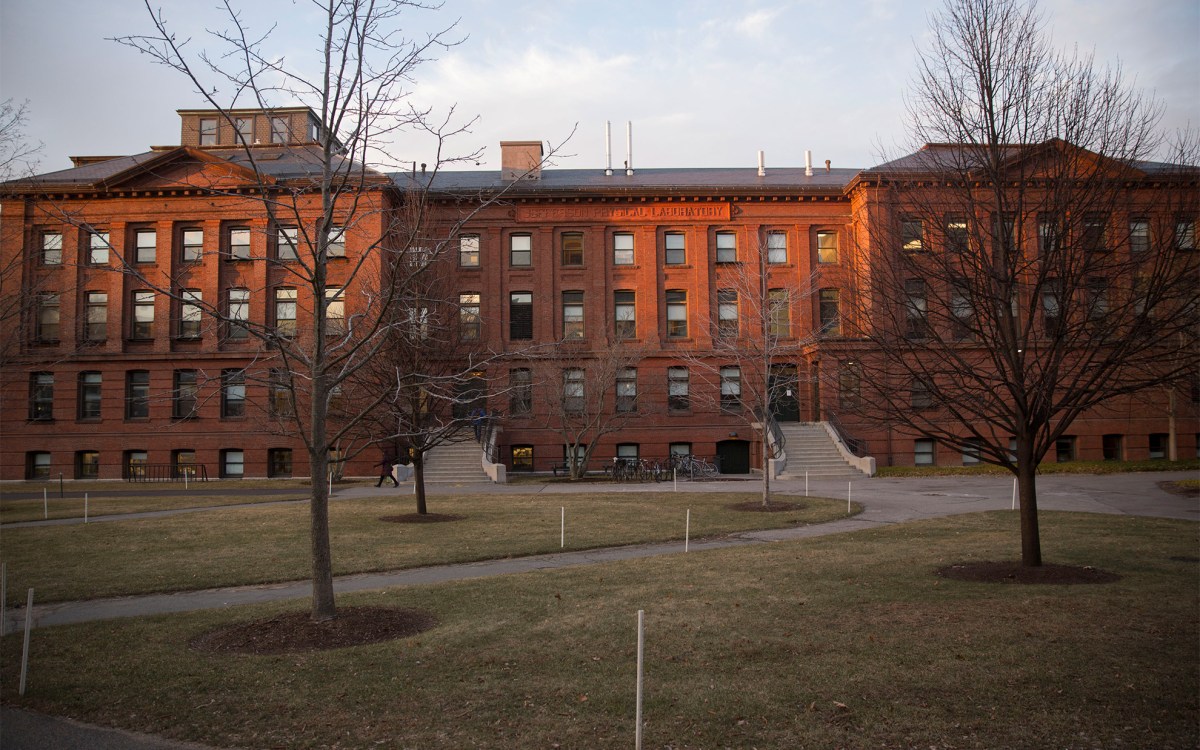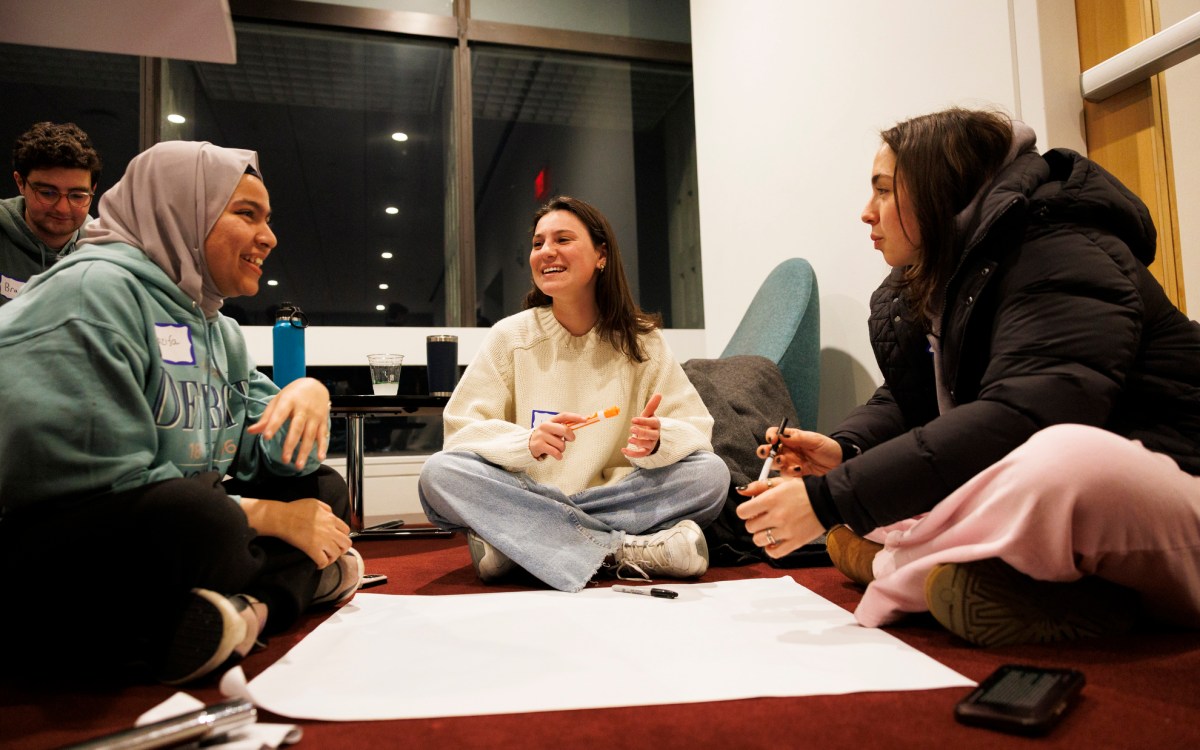‘To Pope Leo XIV’
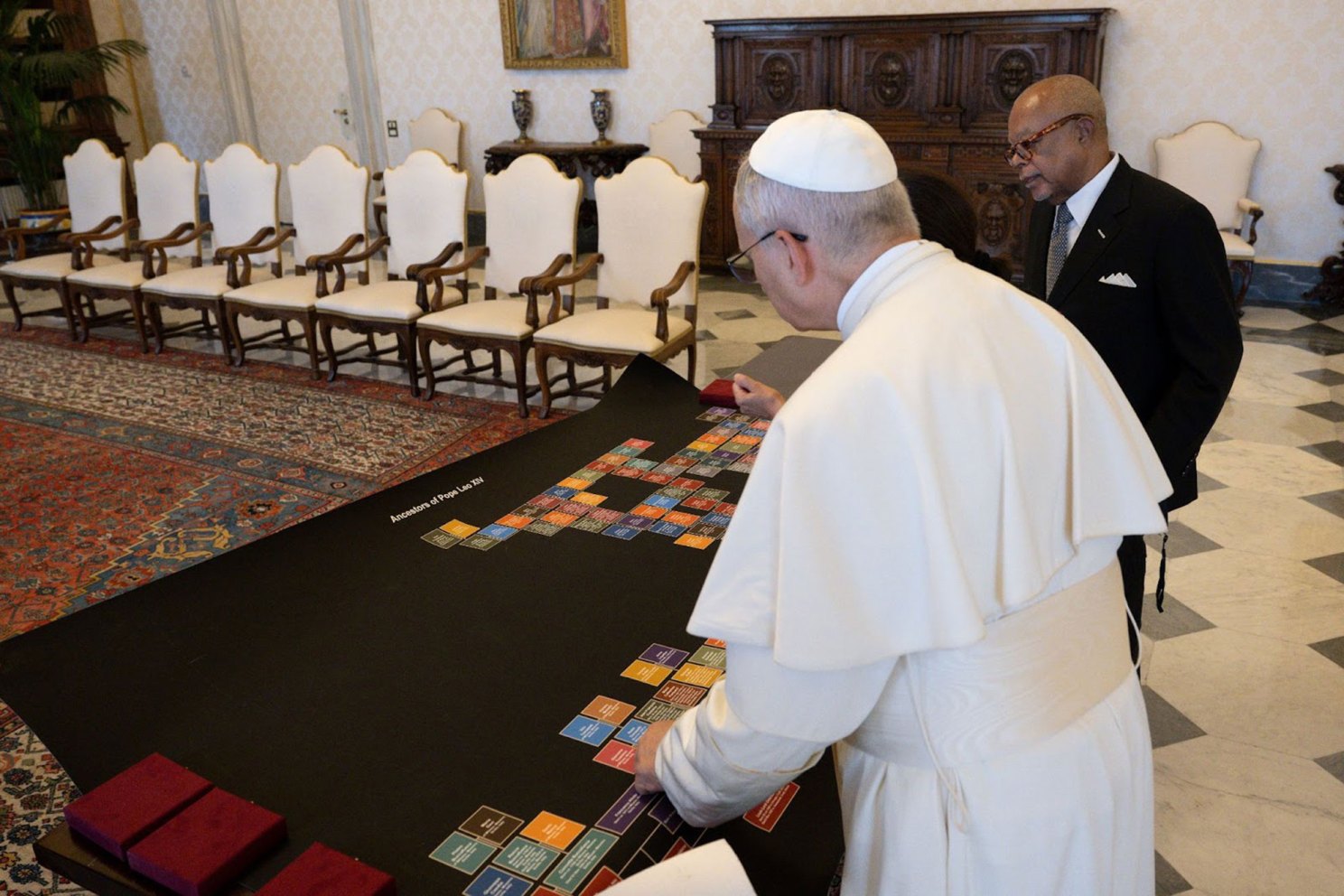
Henry Louis Gates Jr. shares a printout of the papal family tree with Pope Leo XIV.
Photos by Vatican Media ©
Gates meets with ‘ecumenical’ pontiff to present copy of family tree produced from research the scholar did for Times magazine piece
Covering Pope Leo XIV’s entire desk was his family tree, its corners secured by weights.
“Your Holiness,” announced Henry Louis Gates Jr., “your ancestry goes back to your 12th-great-grandparents, who were born 500 years ago — when Leo X was pope.”
The Alphonse Fletcher University Professor and director of the Hutchins Center for African & African American Research took an in-depth look at the pope’s family history for a recent article in The New York Times Sunday Magazine.
Gates and his wife, historian Marial Iglesias Utset, were planning to vacation in Rome anyway. So the celebrated literary scholar and Emmy Award-winning host of PBS’s “Finding Your Roots” requested an audience with the pontiff to present a hard copy of his family tree.
“Having a private audience with the pope was one of the greatest honors of my life,” said Gates, whose show was nominated this month for its second Emmy. “We found him very witty, very smart of course, very down to earth, and very open. He was just delighted by the work we had done, which was very gratifying — because we hadn’t exactly asked for permission.”
“Having a private audience with the pope was one of the greatest honors of my life.”
Henry Louis Gates Jr.
Within a few hours of the new pope’s election in May, Gates was alerted to the new pontiff’s Black Creole New Orleans roots via text messages from Ford Foundation President Darren Walker and former New York Times Executive Editor Dean Baquet, a native of New Orleans.
A day later, the newspaper published a story about this background based on work by New Orleans genealogist Jari Honora, who has contributed to research for guests on “Finding Your Roots.” Gates was then commissioned by the Times magazine to trace the pope’s ancestry “from scratch.”
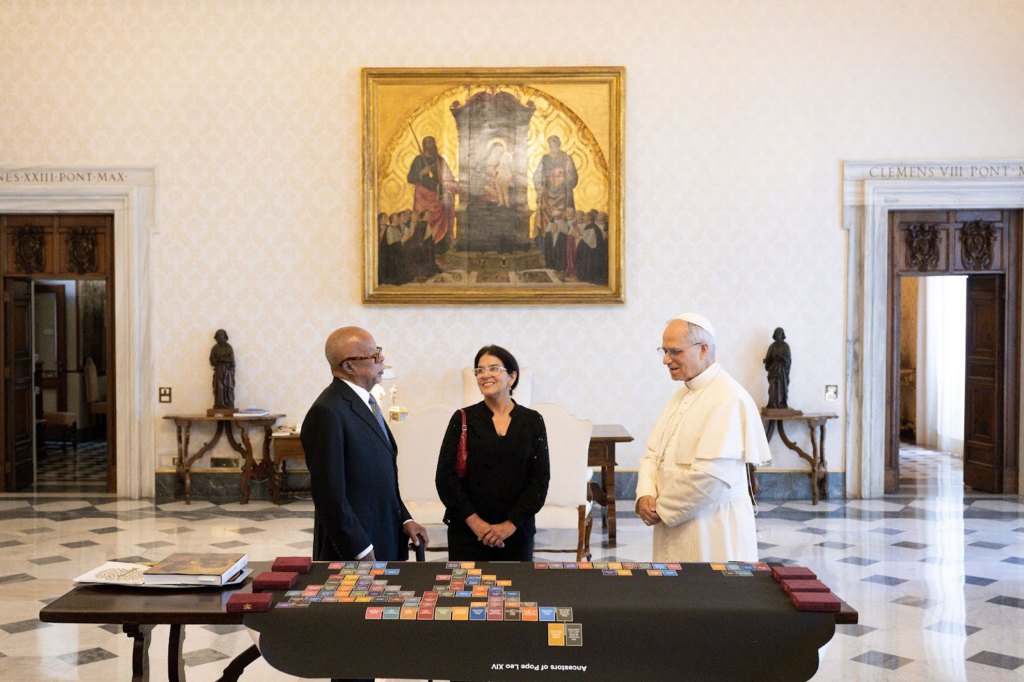
Packed for a July 5 appointment in Vatican City was a 4-by-5 foot printout of the papal family tree, completed under the direction of Boston nonprofit American Ancestors with assistance from the Cuban Genealogy Club of Miami. Gates and Iglesias Utset, a native Cuban who also collaborated on the project, spent 30 minutes with the pope revisiting the lives of more than 100 of his ancestors, with many hailing from France, Spain, Italy, the United States, and Cuba.
“We were a tag team,” recalled Gates, noting the pope’s fluency in Spanish following more than two decades serving the Catholic Church in Peru. “I answered questions about his English-speaking ancestors, and Marial regaled him with information about his Spanish-speaking ancestors.”
Born Robert Francis Prevost in Chicago in 1955, the pope has multiple ancestors from Spanish-speaking countries of the Americas. Iglesias Utset highlighted a fifth cousin named Antonio José de Sucre (1795–1830), a key ally of the 19th-century Venezuelan revolutionary Simón Bolívar.
“Sucre played a crucial role in defeating colonialism in Latin America,” Gates explained. “The pope was really happy about that.”
The pope asked about ancestors, both Black and white, who were enslavers. He also wanted to know whether he had Haitian ancestry. Gates told him about one ancestor born to native New Orleanians who had immigrated to Haiti during the Civil War. When the fighting ending, the whole family moved back to New Orleans.
Genealogists worldwide have already built upon these findings, extending some branches and adding new ones to a uniquely American family tree.
As the meeting wound down, Gates remarked upon the cosmopolitan nature of the holy genome. “I used the word ‘ecumenical,’ from the Greek,” Gates shared. “I said, ‘You are truly our ecumenical pope, and the perfect pope for this moment in the world’s history.’”
Gates also presented a glossy copy of the article itself. The Bishop of Rome, in turn, posed a final question: Would Gates sign the magazine for him?
“Of course, your Holiness,” Gates responded. “How should I address it?”
“To Pope Leo XIV,” came the reply, with both men bursting into laughter.
